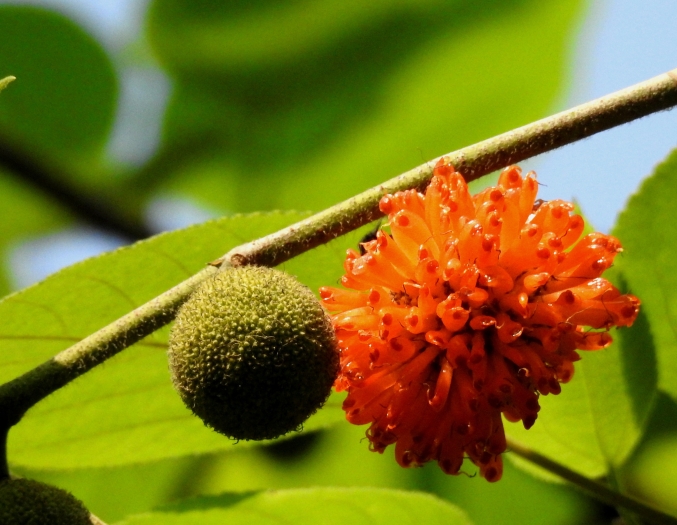Paper Mulberry
(Broussonetia papyrifera)
Paper Mulberry (Broussonetia papyrifera)
/
/

Suhel Quader
CC BY 4.0
Image By:
Suhel Quader
Recorded By:
Copyright:
CC BY 4.0
Copyright Notice:
Photo by: Suhel Quader | License Type: CC BY 4.0 | License URL: http://creativecommons.org/licenses/by/4.0/ | Rights Holder: Suhel Quader | Publisher: iNaturalist | Date Created: 2018-06-22T07:52:17-07:00 |




















Estimated Native Range
Summary
Broussonetia papyrifera, commonly known as Paper Mulberry, is a deciduous tree or shrub native to temperate and subtropical regions of Southeast Asia and East Asia, including China, Japan, and Korea. It often inhabits open woodlands and forest edges, thriving in a variety of soil types. This species typically grows 33-66 feet tall and exhibits a rounded to broad-spreading form. The leaves are variable, often lobed, and the plant is dioecious, meaning individual plants produce either male or female flowers. The flowers are not particularly showy, with the males in catkin-like structures and the females in globular heads, blooming in spring. The fruit is an orange-red syncarp, resembling a mulberry, and is edible.
Paper Mulberry is valued for its fast growth and adaptability to different soil conditions. It is used in urban plantings for shade and ornamental purposes, and its fibrous bark has historical significance in paper and cloth making. In cultivation, it requires full sun to part shade, moderate water, and well-drained soils. It is relatively low maintenance but can be susceptible to canker diseases and root rot in poorly drained soils. Due to its invasive nature, it is not recommended for planting in regions where it is known to spread aggressively.CC BY-SA 4.0
Paper Mulberry is valued for its fast growth and adaptability to different soil conditions. It is used in urban plantings for shade and ornamental purposes, and its fibrous bark has historical significance in paper and cloth making. In cultivation, it requires full sun to part shade, moderate water, and well-drained soils. It is relatively low maintenance but can be susceptible to canker diseases and root rot in poorly drained soils. Due to its invasive nature, it is not recommended for planting in regions where it is known to spread aggressively.CC BY-SA 4.0
Plant Description
- Plant Type: Shrub, Tree
- Height: 40-50 feet
- Width: 30-40 feet
- Growth Rate: Rapid
- Flower Color: Green, White, Yellow
- Flowering Season: Spring, Summer
- Leaf Retention: Deciduous
Growth Requirements
- Sun: Full Sun, Part Shade
- Water: Low, Medium
- Drainage: Fast, Medium, Slow
Common Uses
Deer Resistant, Drought Tolerant, Erosion Control
Natural Habitat
native to temperate and subtropical regions of Southeast Asia and East Asia, including China, Japan, and Korea, often inhabiting open woodlands and forest edges
Other Names
Common Names: Halibunoki, Aka, Gou Shu, Tapacloth Mulberry
Scientific Names: , Broussonetia papyrifera, Broussonetia billardii, Broussonetia cordata, Broussonetia cordata, Broussonetia cucullata, Broussonetia dissecta, Broussonetia elegans, Broussonetia kasii, Broussonetia kazi
GBIF Accepted Name: